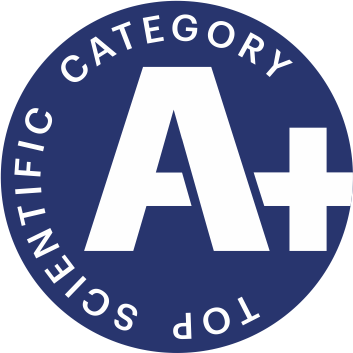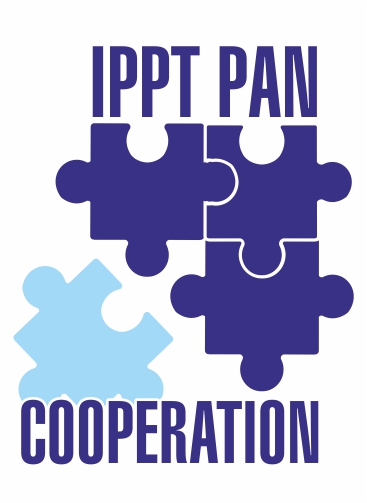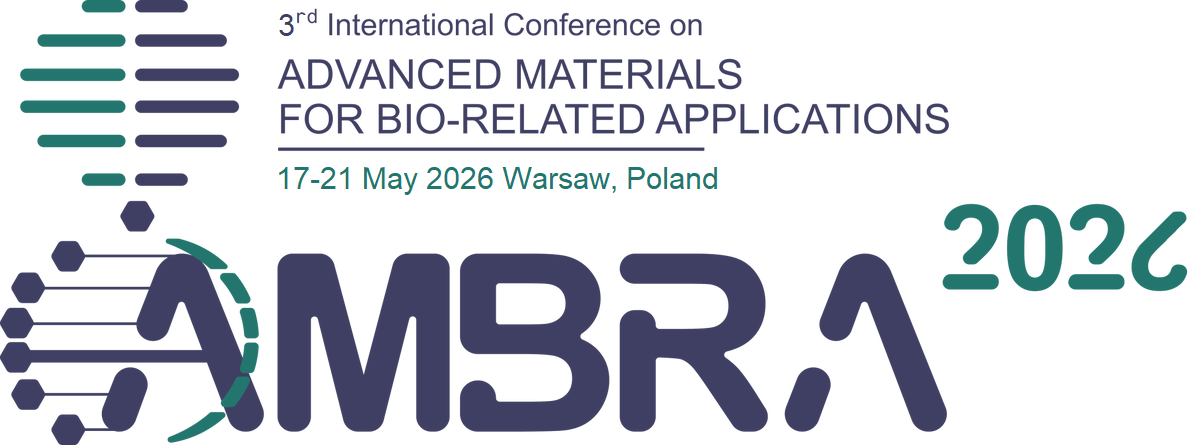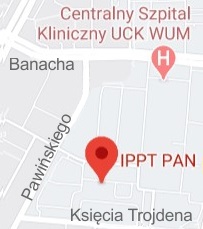| 1. |
Asgaran S.♦, Moazzami Goudarzi Z., Pietrzyk-Thel P., Banti B.F.♦, Osial M., Michalska M.♦, Warczak M.♦, Gniadek M.♦, Lee J.♦, Giersig M., Njoku Nwaji N., Compressible Co3O4@MoS2 Aerogel as an Advanced Functional Electrode for Asymmetric Supercapacitors,
ACS Applied Materials and Interfaces, ISSN: 1944-8244, DOI: 10.1021/acsami.5c06548, Vol.17, No.34, pp.48173-48183, 2025 Abstract:
For the development of the next generation of portable energy storage devices, compression tolerant electrodes are essential, but most of previous reports focused only on carbon-based materials. Herein, gelatin methacrylate (GelMA) and poly(N-isopropylacrylamide) (PNIIPAM) were used as host to incorporate Co3O4@MoS2 Aerogel (Co3O4@MoS2 AG). The GelMa-PNIPAM (GP) was transformed into carbon network as an intrinsically compressible host template with high conductivity. The as-prepared electrode possesses a reversible compressive strain of 80% with excellent durability. Density functional theory (DFT) calculations show that the Co3O4@MoS2-AG heterostructure exhibits high electronic conductivity, low adsorption energy for OH- ions and fast electron transfer capacity, which enhance the electrochemical performance with high specific capacitance of 1026.9 at 1 A g-1 with remarkable cycling stability of 80.8% after 10,000 charge-discharge cycles. Besides, the assembled asymmetric supercapacitor based on compressible Co3O4@MoS2 AG/RGO exhibits stable energy storage performance under different compressive strains and after 100 compression-release cycles. The results of this study demonstrate the potential of metal-based electrode with high energy storage properties for wearable devices. Keywords:
Compressible electrode, Assymetric supercapacitor, Aerogel, CO3O4, MoS2 Affiliations:
| Asgaran S. | - | other affiliation | | Moazzami Goudarzi Z. | - | IPPT PAN | | Pietrzyk-Thel P. | - | IPPT PAN | | Banti B.F. | - | other affiliation | | Osial M. | - | IPPT PAN | | Michalska M. | - | Łukasiewicz Research Network‒Institute of Electronic Materials Technology (PL) | | Warczak M. | - | Institute of Physical Chemistry, Polish Academy of Sciences (PL) | | Gniadek M. | - | other affiliation | | Lee J. | - | Lexington High School (US) | | Giersig M. | - | IPPT PAN | | Njoku Nwaji N. | - | IPPT PAN |
|  |
| 2. |
Nwaji N., Fikadu B. B.♦, Osial M., Warczak M.♦, Moazzami Goudarzi Z., Gniadek M.♦, Asgaran S.♦, Lee J.♦, Giersig M., Advanced Functional NiCo 2 S4 @CoMo2 S4 Heterojunction Couple as Electrode for Hydrogen Production via Energy-Saving Urea Oxidation,
Small, ISSN: 1613-6810, DOI: 10.1002/smll.202410848, Vol.21, No.9, pp.2410848-1-13, 2025 Abstract:
The urea oxidation reaction (UOR) is characterized by a lower overpotential compared to the oxygen evolution reaction (OER) during electrolysis, which facilitates the hydrogen evolution reaction (HER) at the cathode. Charge
distribution, which can be modulated by the introduction of a heterostructure, plays a key role in enhancing the adsorption and cleavage of chemical groups within urea molecules. Herein, a facile all-room temperature synthesis of functional heterojunction NiCo2 S4 /CoMo 2 S4 grown on carbon cloth (CC) is presented, and the as-prepared electrode served as a catalyst for simultaneous hydrogen evolution and urea oxidation reaction. The Density
Functional Theory (DFT) study reveals spontaneous transfer of charge at the heterointerface of NiCo 2 S4 /CoMo 2 S4 , which triggers the formation of localized electrophilic/nucleophilic regions and facilitates the adsorption of electron donating/electron withdrawing group in urea molecules during the UOR. The NiCo2 S4 /CoMo 2 S4 // NiCo 2 S4 /CoMo 2 S4 electrode pair required only a cell voltage of 1.17 and 1.18 V to deliver a current density of 10 and 100 mA cm−2 respectively in urea electrolysis cell and display very good stability. Tests performed in real urine samples show similar catalytic performance to urea electrolytes, making the work one of the best transition
metal-based catalysts for UOR applications, promising both efficient hydrogen production and urea decomposition. Affiliations:
| Nwaji N. | - | IPPT PAN | | Fikadu B. B. | - | other affiliation | | Osial M. | - | IPPT PAN | | Warczak M. | - | Institute of Physical Chemistry, Polish Academy of Sciences (PL) | | Moazzami Goudarzi Z. | - | IPPT PAN | | Gniadek M. | - | University of Warsaw (PL) | | Asgaran S. | - | other affiliation | | Lee J. | - | Lexington High School (US) | | Giersig M. | - | IPPT PAN |
|  |
| 3. |
Khosravi N.♦, Alzufairi A.♦, Zahed P.♦, Abouchenari A.♦, Asgaran S.♦, Reza-Soltani S.♦, Moazzami Goudarzi Z., Biomedical applications of copper nanoparticles: an up-to-date overview,
Journal of Composites and Compounds, ISSN: 2676-5837, DOI: 10.61186/jcc.6.4.1, Vol.6, pp.21-1-8, 2024 Abstract:
Copper nanoparticles (CuNPs) have garnered significant attention in biomedicine due to their various properties and potential applications. These nanoparticles exhibit promising antimicrobial, anticancer, and antioxidant activities, which enhance their value in nanomedicine applications. Their properties, shaped by the fabrication techniques, facilitate their application in drug delivery, cancer therapy, tissue engineering, and dental applications uses. Nevertheless, obstacles persist in attaining biocompatibility and regulated release, which are vital for effective clinical transference. Toxicological evaluations are essential to ensure the secure utilization of CuNPs. Additionally, studies are ongoing to find creative solutions to address these challenges and fully harness the medical potential of CuNPs. Keywords:
Copper nanoparticles,Antibacterial,Synthesis,Biocompatibility,Biomedical applications Affiliations:
| Khosravi N. | - | other affiliation | | Alzufairi A. | - | other affiliation | | Zahed P. | - | other affiliation | | Abouchenari A. | - | other affiliation | | Asgaran S. | - | other affiliation | | Reza-Soltani S. | - | other affiliation | | Moazzami Goudarzi Z. | - | IPPT PAN |
| 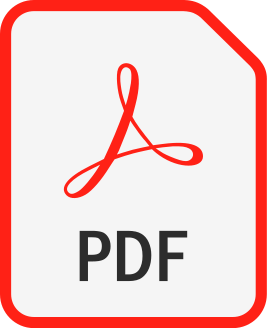 |
| 4. |
Nwaji N., Fikadu B.♦, Osial M., Moazzami Goudarzi Z., Asgaran S.♦, Teshome Tufa L.♦, Lee J.♦, Giersig M., Disentangling the catalytic origin in defect engineered 2D NiCoMoS@Ni(CN)2 core-shell heterostructure for energy-saving hydrazine-assisted water oxidation,
International Journal of Hydrogen Energy, ISSN: 0360-3199, DOI: 10.1016/j.ijhydene.2024.08.432, Vol.86, pp.554-563, 2024 Abstract:
The major hindrance to efficient electrocatalytic hydrogen generation from water electrolysis is the sluggish kinetics with corresponding large overvoltage of oxygen evolution reaction. Herein, we report a defective 2D NiCoMoS@Ni(CN)2 core-shell heterostructure derived from Hofmann-type MOF as an efficient and durable high-performance noble metal-free electrocatalyst for hydrazine oxidation reaction (HzOR) in alkaline media. The sluggish oxygen evolution reaction was replaced with a more thermodynamically favourable HzOR, enabling energy-saving electrochemical hydrogen production with 2D NiCoMoS@Ni(CN)2 acting as a bifunctional electrocatalyst for anodic HzOR and cathodic hydrogen generation. Operating at room temperature, the two-electrode electrolyzer delivers 100 mA cm−2 from a cell voltage of just 257 mV, with strong long-term electrochemical durability and nearly 100% Faradaic efficiency for hydrogen evolution in 1.0 M KOH aqueous solution with 0.5 M hydrazine. The density functional theory (DFT) was employed to investigate the origin of catalytic performance and showed that high vacancy creation within the heterointerface endowed NiCoMoS@Ni(CN)2 with favourable functionalities for excellent catalytic performance. Keywords:
Defect engineering, Core-shell, Electrocatalyst, Hydrazine oxidation, Heterostructure Affiliations:
| Nwaji N. | - | IPPT PAN | | Fikadu B. | - | other affiliation | | Osial M. | - | IPPT PAN | | Moazzami Goudarzi Z. | - | IPPT PAN | | Asgaran S. | - | other affiliation | | Teshome Tufa L. | - | other affiliation | | Lee J. | - | Lexington High School (US) | | Giersig M. | - | IPPT PAN |
|  |
| 5. |
Moazzami Goudarzi Z., Zaszczyńska A., Kowalczyk T., Sajkiewicz P.Ł., Electrospun Antimicrobial Drug Delivery Systems and Hydrogels Used for Wound Dressings,
Pharmaceutics, ISSN: 1999-4923, DOI: 10.3390/pharmaceutics16010093, Vol.16, No.1, pp.93-1-27, 2024 Abstract:
Wounds and chronic wounds can be caused by bacterial infections and lead to discomfort in patients. To solve this problem, scientists are working to create modern wound dressings with antibacterial additives, mainly because traditional materials cannot meet the general requirements for complex wounds and cannot promote wound healing. This demand is met by material engineering, through which we can create electrospun wound dressings. Electrospun wound dressings, as well as those based on hydrogels with incorporated antibacterial compounds, can meet these requirements. This manuscript reviews recent materials used as wound dressings, discussing their formation, application, and functionalization. The focus is on presenting dressings based on electrospun materials and hydrogels. In contrast, recent advancements in wound care have highlighted the potential of thermoresponsive hydrogels as dynamic and antibacterial wound dressings. These hydrogels contain adaptable polymers that offer targeted drug delivery and show promise in managing various wound types while addressing bacterial infections. In this way, the article is intended to serve as a compendium of knowledge for researchers, medical practitioners, and biomaterials engineers, providing up-to-date information on the state of the art, possibilities of innovative solutions, and potential challenges in the area of materials used in dressings. Keywords:
wound dressings, drug delivery systems, thermoresponsive hydrogels Affiliations:
| Moazzami Goudarzi Z. | - | IPPT PAN | | Zaszczyńska A. | - | IPPT PAN | | Kowalczyk T. | - | IPPT PAN | | Sajkiewicz P.Ł. | - | IPPT PAN |
|  |
| 6. |
Osial M., Wilczewski S.♦, Godlewska U.♦, Skórczewska K.♦, Hilus J.♦, Szulc J.♦, Roszkiewicz-Walczuk A., Dąbrowska A.♦, Moazzami Goudarzi Z., Lewandowski K.♦, Wypych T.♦, Nguyen Phuong T.♦, Sumara G.♦, Giersig M., Incorporation of Nanostructural Hydroxyapatite and Curcumin Extract from Curcuma longa L. Rhizome into Polylactide to Obtain Green Composite,
Polymers, ISSN: 2073-4360, DOI: 10.3390/polym16152169, Vol.16, No.15, pp.2169-1-20, 2024 Abstract:
This study showed that a polylactide (PLA)-based composite filled with nanostructured hydroxyapatite (HAp) and a natural extract from the rhizome of Curcuma longa L. could provide an alternative to commonly used fossil-based plasticsfor food packaging. The incorporation of HAp into the PLA matrix had a positive effect on improving selected properties of the composites; the beneficial effect could be enhanced by introducing a green modifier in the form of an extract. Prior to the fabrication of the composite, the filler was characterized in terms of morphology and composition, and the composite was then fully characterized by scanning electron microscopy (SEM), atomic force microscopy (AFM), Raman and Fourier transform infrared spectroscopy (FT-IR), and the mechanical, thermal, thermomechanical, and optical properties were investigated. The proposed material exhibits antioxidant properties against DPPH radicals and antibacterial performance against Escherichia coli (E. coli). The results showed that the nanocomposite has the highest antioxidant and antibacterial properties for 10 wt% HAp with an average diameter of rod-shaped structures below 100 nm. In addition, the introduction of turmeric extract had a positive effect on the tensile strength of the nanocomposites containing 1 and 5% HAp. As the resulting material adsorbs light in a specific wavelength range, it can be used in the medical sector, food-packaging, or coatings.
Keywords:
polylactide, hydroxyapatite, turmeric extract, curcumin extract, green composite Affiliations:
| Osial M. | - | IPPT PAN | | Wilczewski S. | - | other affiliation | | Godlewska U. | - | other affiliation | | Skórczewska K. | - | other affiliation | | Hilus J. | - | other affiliation | | Szulc J. | - | other affiliation | | Roszkiewicz-Walczuk A. | - | IPPT PAN | | Dąbrowska A. | - | University of Warsaw (PL) | | Moazzami Goudarzi Z. | - | IPPT PAN | | Lewandowski K. | - | other affiliation | | Wypych T. | - | other affiliation | | Nguyen Phuong T. | - | other affiliation | | Sumara G. | - | other affiliation | | Giersig M. | - | IPPT PAN |
|  |
| 7. |
Altangerel A., Moazzami Goudarzi Z., Cegielska O., Gradys A.D., Kołbuk-Konieczny D., Kalaska B.♦, Ruszczyńska A.♦, Sajkiewicz P.Ł., A facile one-stone-two-birds strategy for fabricating multifunctional 3D nanofibrous scaffolds,
Biomaterials Science, ISSN: 2047-4849, DOI: 10.1039/D3BM00837A, Vol.11, No.16, pp.5502-5516, 2023 Abstract:
Local bacterial infections lead to delayed wound healing and in extreme cases, such as diabetic foot ulcers, to non-healing due to the impaired cellular function in such wounds. Thus, many scientists have focused on developing advanced therapeutic platforms to treat infections and promote cellular proliferation and angiogenesis. This study presents a facile approach for designing nanofibrous scaffolds in three dimensions (3D) with enhanced antibacterial activity to meet the need of treating chronic diabetic wounds. Being a cationic surfactant as well as an antimicrobial agent, octenidine (OCT) makes a 2D membrane hydrophilic, enabling it to be modified into a 3D scaffold in a “one stone, two birds” manner. Aqueous sodium borohydride (NaBH4) solution plays a dual role in the fabrication process, functioning as both a reducing agent for the in situ synthesis of silver nanoparticles (Ag NPs) anchored on the nanofiber surface and a hydrogen gas producer for expanding the 2D membranes into fully formed 3D nanofiber scaffolds, as demonstrated by morphological analyses. Various techniques were used to characterize the developed scaffold (e.g., SEM, XRD, DSC, FTIR, and surface wettability), demonstrating a multilayered porous structure and superhydrophilic properties besides showing sustained and prolonged release of OCT (61% ± 1.97 in 144 h). Thanks to the synergistic effect of OCT and Ag NPs, the antibacterial performance of the 3D scaffold was significantly higher than that of the 2D membrane. Moreover, cell viability was studied in vitro on mouse fibroblasts L929, and the noncytotoxic character of the 3D scaffold was confirmed. Overall, it is shown that the obtained multifunctional 3D scaffold is an excellent candidate for diabetic wound healing and skin repair. Affiliations:
| Altangerel A. | - | IPPT PAN | | Moazzami Goudarzi Z. | - | IPPT PAN | | Cegielska O. | - | IPPT PAN | | Gradys A.D. | - | IPPT PAN | | Kołbuk-Konieczny D. | - | IPPT PAN | | Kalaska B. | - | other affiliation | | Ruszczyńska A. | - | other affiliation | | Sajkiewicz P.Ł. | - | IPPT PAN |
|  |
| 8. |
Moazzami Goudarzi Z., Soleimani M.♦, Ghasemi-Mobarakeh L.♦, Sajkiewicz P., Sharifianjazi F.♦, Esmaeilkhanian A.♦, Khaksar S.♦, Control of drug release from cotton fabric by nanofibrous mat,
International Journal of Biological Macromolecules, ISSN: 0141-8130, DOI: 10.1016/j.ijbiomac.2022.06.138, Vol.217, pp.270-281, 2022 Abstract:
A drug delivery system (DDSs) was developed in the present study based on textile substrates as drug carriers and electrospun nanofibers as a controller of release rate. Three types of drugs consisting of ciprofloxacin (CIP), clotrimazole (CLO), and benzalkonium chloride (BEN) were loaded into the cover glass (CG) and cotton fabrics (CF1 and CF2) separately. Then, the drug-loaded substrates were coated with polycaprolactone (PCL) and polycaprolactone/gelatin (PCL/Gel) nanofibers with various thicknesses. The morphology and hydrophilicity of the electrospun nanofibers and the release profile of drug-loaded samples were investigated. FTIR, XRD, and in vitro biodegradability analysis were analyzed to characterize the drug delivery system. A morphological study of electrospun fibers showed the mean diameter of the PCL and PCL/Gel nanofibers 127 ± 25 and 178 ± 38 nm, respectively. The drug delivery assay revealed that various factors affect the rate of drug releases, such as the type of drug, the type of drug carrier, and the thickness of the covered nanofibers. The study highlights the ability of drugs to load substrates with coated nanofibers as controlled drug delivery systems. In conclusion, it is shown that the obtained samples are excellent candidates for future wound dressing applications. Keywords:
electrospinning, controlled drug release, ciprofloxacin Affiliations:
| Moazzami Goudarzi Z. | - | IPPT PAN | | Soleimani M. | - | Isfahan University of Technology (IR) | | Ghasemi-Mobarakeh L. | - | Isfahan University of Technology (IR) | | Sajkiewicz P. | - | IPPT PAN | | Sharifianjazi F. | - | University of Georgia (US) | | Esmaeilkhanian A. | - | Amirkabir University of Technology (IR) | | Khaksar S. | - | University of Georgia (US) |
|  |
| 9. |
Moazzami Goudarzi Z.♦, Behzad T.♦, Sheykhzadeh A.♦, Effect of hydrophobically modified extracted starch nanocrystal on the properties of LDPE/ thermoplastic starch (TPS)/PE-g-MA nanocomposite,
JOURNAL OF APPLIED POLYMER SCIENCE, ISSN: 0021-8995, DOI: 10.1002/app.51490, Vol.139, No.2, pp.51490-1-12, 2022 Abstract:
In the current study, the key role of incorporation of starch nanocrystals (SNC) and modified acetylated starch nanocrystals (ASNC) on mechanical, physical, and biological properties of low-density polyethylene/thermoplastic starch/polyethylene-grafted-maleic anhydride (LDPE/TPS/PE-g-MA) blend was individually investigated. To achieve this, SNC was successfully extracted from waxy maize starch by chemical treatment utilizing acid hydrolysis. The results of solubility of the modified specimens showed that the hydrophilicity of ASNC was well reduced by dispersion enhancement in non-polar solvents, which was also proved by increasing considerably the contact angle, after modification, 37.9° ± 3.5° to 59.9° ± 3.1°. It was noticed that the mechanical properties of the ASNC nanocomposites were significantly affected by the filler type and content. Furthermore, by adding 3.0 wt% ASNC (3ASNC), the ultimate tensile strength of the nanocomposite was considerably enhanced from 9.0 ± 0.1 to 12.0 ± 0.3 MPa; it may be due to homogeneous dispersion of the ASNC. Moreover, the water absorption capacity was remarkably enhanced from 0.1% for the pure polymer, low-density polyethylene (LDPE), to 1.9% for modified nanocomposite (3.0 wt% ASNC) and 4.1% for unmodified nanocomposite (5 wt% SNC). In addition, the degradation rate of 3ASNC nanocomposite was improved by 1% compared with LDPE. In conclusion, LDPE/TPS/PE-g-MA nanocomposite reinforced by ASNC shows excellent potential as a promising candidate for polyethylene packaging applications, thanks to the combination of biodegradability and superior mechanical properties. Keywords:
acetylation, biodegradability, low-density polyethylene, mechanical properties, thermoplastic starch, waxy maize starch Affiliations:
| Moazzami Goudarzi Z. | - | other affiliation | | Behzad T. | - | other affiliation | | Sheykhzadeh A. | - | other affiliation |
|  |
| 10. |
Moazzami Goudarzi Z.♦, Behzad T.♦, Ghasemi-Mobarakeh L.♦, Kharaziha M.♦, An investigation into influence of acetylated cellulose nanofibers on properties of PCL/Gelatin electrospun nanofibrous scaffold for soft tissue engineering,
POLYMER, ISSN: 0032-3861, DOI: 10.1016/j.polymer.2020.123313, Vol.213, pp.123313-1-11, 2021 Abstract:
In this study, the effective role of incorporation of cellulose nanofibers (CNF) and modified acetylated cellulose nanofibers (ACNF) on mechanical, physical, and biological properties of poly (ε-caprolactone) (PCL)/gelatin (Gel) electrospun nanofibrous scaffold was individually investigated. It was noticed that mechanical and biological properties of the scaffolds were considerably affected by the filler type and content. Although, by addition of 2 wt% ACNF, the ultimate tensile strength (UTS) of the PCL/Gel was remarkably enhanced from 2.5 ± 0.1 MPa to 4.3 ± 0.1 MPa due to homogeneous dispersion of the ACNF, however, the degradation rate of PCL/Gel scaffold was reduced about 1.66 times. Moreover, the studies on the interactions between hybrid scaffolds and fibroblast cells revealed that the incorporation of ACNF into scaffold not only showed no cytotoxic, but also promoted cell proliferation. In conclusion, PCL/Gel nanocomposite scaffolds reinforced by ACNFs show an excellent potential as a promising candidate for soft tissue engineering applications. Keywords:
Electrospinning, Poly (ε-caprolactone), Gelatin, Cellulose nanofibers, Acetylated cellulose nanofibers, Tissue engineering Affiliations:
| Moazzami Goudarzi Z. | - | other affiliation | | Behzad T. | - | other affiliation | | Ghasemi-Mobarakeh L. | - | Isfahan University of Technology (IR) | | Kharaziha M. | - | other affiliation |
|  |
| 11. |
Khalilpour H.♦, Shafiee P.♦, Darbandi A.♦, Yusuf M.♦, Mahmoudi S.♦, Moazzami Goudarzi Z.♦, Mirzamohammadi S.♦, Application of Polyoxometalate-based composites for sensor systems: A review,
Journal of Composites and Compounds, ISSN: 2676-5837, DOI: 10.52547/jcc.3.2.6, Vol.3, No.7, pp.129-139, 2021 Abstract:
Composites based on polyoxometalates (POMs) have been increasingly attracted by many researchers due to their multitudinous architectures and excellent redox activities as well as outstanding proton and electron transport capacities. Lately, much research has been done on POMs composited with well-porous framework materials (including ZIFs, MOFs) or conducting polymers, carbon quantum dot (CQD), graphene, carbon structures (e.g. carbon nanotubes (CNTs)), and metal nanoparticles (NPs). The results exhibited improved stability and enhanced electrochemical performances. Hence, developing POMs and POM-based composite materials (PCMs) has long been a topic of interest for chemical researchers. Herein, the properties and applications of pristine POMs, doped POMs, and composite-based POMs are reviewed in detail. The various compositions of POMs with sensing application such as POMs-nanocarbon composites (POMs-graphene composites and POMs-carbon nanotube composites), POMs-conductive polymer composites, and POMs-metal composites are also investigated in this review. Keywords:
Polyoxometalates, Composites, Framework materials, Electrochemical performances Affiliations:
| Khalilpour H. | - | other affiliation | | Shafiee P. | - | other affiliation | | Darbandi A. | - | other affiliation | | Yusuf M. | - | other affiliation | | Mahmoudi S. | - | other affiliation | | Moazzami Goudarzi Z. | - | other affiliation | | Mirzamohammadi S. | - | other affiliation |
|  |
| 12. |
Kouhi M.Z.♦, Behzad T.♦, Ghasemi-Mobarakeh L.♦, Allafchian A.♦, Moazzami Goudarzi Z.♦, Enayati M.S.♦, Proceeding toward the development of poly(ɛ-caprolactone)/cellulose microfibrils electrospun biocomposites using a novel ternary solvent system,
The Journal of The Textile Institute, ISSN: 0040-5000, DOI: 10.1080/00405000.2019.1633216, Vol.111, No.2, pp.249-259, 2020 Abstract:
In the current study, a mixture of formic acid (FA), acetic acid (AA), and acetone was used, for the first time, as a ternary solvent system to dissolve poly(ɛ-caprolactone) (PCL). In addition, as a biomaterial reinforcement, various amounts of cellulose microfibrils (CMF) (1.5, 3, and 5 wt.%), extracted from rice husk, were added to PCL solution, and subsequently the prepared suspensions were individually electrospun. Adding acetone to FA/AA solvent system led to fabrication of uniform electrospun nanofibers with the average diameter of 178 ± 38 nm. Upon CMF incorporation, the mean electrospun fiber diameter was increased to 320 ± 132 nm at 5 wt.% CMF mostly due to the solution viscosity rise. In addition, scanning electron microscopy (SEM) confirmed wider diameter distribution in the presence of CMF. The electrospun fibers were also analyzed via wide angle X-ray scattering (WAXS) and differential scanning calorimetry (DSC) to study the supermolecular structure and thermal behavior of fibrous bionanocomposites, respectively. Both the characterizations positively affect the PCL crystallinity as a result of CMF incorporation. The DSC measurements showed the highest crystallinity (70.11%) at 1.5 wt.% CMF incorporation. The effect of CMF addition on the hydrophilicity of PCL was also investigated by contact angle measurement, where a decreasing trend in contact angle was observed upon CMF loading. Moreover, in vitro degradability of the bionanocomposite nonwoven mats was studied in PBS solution. The rate of degradation was enhanced in the presence of CMF. Moreover, tensile mechanical analysis was carried out and CMF inclusion had a reinforcing impact on electrospun PCL. The highest modulus (19.17 ± 0.8 MPa) and ultimate tensile strength (UTS) (4.45 ± 0.32 MPa) were achieved at 1.5 wt.% CMF addition to PCL. Keywords:
Biocomposite, poly(Ecaprolactone), cellulose microfibrils, ternary solvent mixture, electrospinning Affiliations:
| Kouhi M.Z. | - | other affiliation | | Behzad T. | - | other affiliation | | Ghasemi-Mobarakeh L. | - | Isfahan University of Technology (IR) | | Allafchian A. | - | other affiliation | | Moazzami Goudarzi Z. | - | other affiliation | | Enayati M.S. | - | Isfahan University of Technology (IR) |
|  |
| 13. |
Moazzami Goudarzi Z.♦, Behzad T.♦, Ghasemi-Mobarakeh L.♦, Kharaziha M.♦, Enayati M.S.♦, Structural and mechanical properties of fibrous poly (caprolactone)/gelatin nanocomposite incorporated with cellulose nanofibers,
POLYMER BULLETIN, ISSN: 0170-0839, DOI: 10.1007/s00289-019-02756-5, Vol.77, pp.717-740, 2020 Abstract:
To proceed with the electrospun poly (caprolactone) (PCL)/gelatin (Gel) combinations, the current research was aimed to explore the incorporation of cellulose nanofibers (CNF) into the PCL/Gel blends for the first time. Accordingly, various amounts of CNF were added to different ratios of PCL/Gel, and the corresponding electrospun nanocomposites were examined. Observing morphology via scanning electron microscopy proved, unexpectedly, increasing fibers diameter upon CNF addition into PCL/Gel blends. Mechanical analysis in tensile mode revealed more brittle electrospun PCL/Gel when more Gel was included into the blend due to higher Young’s modulus and lower ultimate tensile strength and strain at break. Addition of various contents of CNF led to strain reduction while displayed a summit-like curve for UTS and modulus, where registered maximum values at 2 wt% CNF for all PCL/Gel/CNF. Among the electrospun nanocomposites the highest UTS (3.24 ± 0.22 MPa) belonged to sample including 70 wt% PCL, 30 wt% Gel, and 2 wt% CNF (P70/2CNF), while P30/2CNF recorded maximum modulus (93.89 ± 10.44 MPa). The wide-angle X-ray scattering confirmed increase in PCL crystallinity upon CNF incorporation Furthermore, the presence of PCL, Gel, and CNF in electrospun composites was confirmed with Fourier transform infrared spectroscopy. Degradability of electrospun nanocomposites was carried out in PBS solution, which showed that CNF addition reduced degradation rate of PCL/Gel blends. Keywords:
Poly (caprolactone), Gelatin, Cellulose nanofibers, Electrospun nanocomposite Affiliations:
| Moazzami Goudarzi Z. | - | other affiliation | | Behzad T. | - | other affiliation | | Ghasemi-Mobarakeh L. | - | Isfahan University of Technology (IR) | | Kharaziha M. | - | other affiliation | | Enayati M.S. | - | Isfahan University of Technology (IR) |
|  |
















